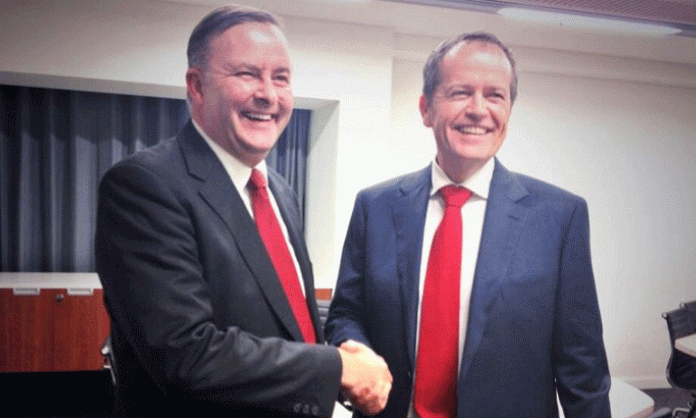Prominent past and present Labor politicians, liberal literati and ALP well-wishers in the Murdoch press have been complaining for years about the influence of factions inside the party. Whether this whingeing is accompanied by calls to curb connections with the unions or not, it is part of a campaign to liquidate Labor’s links with its working class base.
That would turn the ALP into a pastel version of the deep blue Liberal Party, the equivalent of the US Democratic Party, another straightforward party of big business.
The factions have been fundamental to the way Labor operates in practice. The decline in their influence in the parliamentary caucuses over the past 20 years has been a major factor in the disunity and turmoil identified by many ALP apologists and superficial commentators as the main cause of the Rilludd government’s demise.
Labor is a capitalist workers’ party. On the one hand, it is committed to managing Australian capitalism and thus to perpetuating exploitation. On the other, its core constituency lies in the working class. The factions have been a crucial element in the party’s material constitution.
The historical connection between the party and the working class has multiple strands. All of them are fraying.
Workers have tended to vote Labor. The party still does best in working class, city electorates. While in decline since the 1960s, working class identification with the ALP is still a fact of life.
In terms of active membership and especially active working class membership, Labor is now a shadow of its former self. Many branches are inactive shells. In branches, the role of parliamentarians and full time union officials (who are, by definition, not workers employed by a boss), the staffers, families and immediate hangers-on of the professional politicians is disproportionate.
In order to recruit and hold members, the party has been reducing the already low requirements for participation in important ballots.
Trade union affiliation indirectly connects Labor with the working class, through the layer of senior full time union officials who control their organisations’ funding for the party and delegations to state and territory ALP conferences. Inside the party the main left and right factions and sub-factions are associated with unions. They are very important channels for union influence over the allocation of jobs and, to a smaller extent, over policy.
But the ability of union officials to exercise influence, inside and outside the Labor Party, has been declining. With the exception of relatively short episodes, the failure of union leaders to conduct militant and therefore effective campaigns to defend their members has weakened the movement since the 1980s.
The ratio of union members to potential members has trended downwards. Traditions of rank and file involvement, organisation, activism and militancy have decayed.
Public funding of political parties and elections since the 1980s has also reduced the importance of unions for the Labor Party.
The unravelling of the long term ties between the working class, particularly through the unions, and the Labor Party has weakened the effectiveness of factions in the party and increased the autonomy of its parliamentary leaders, who have shifted the ALP to the right.
The rightward shift has progressively evaporated distinctions between the left and right inside the party. As former NSW Labor minister Rodney Cavalier put it in 2005, “the factions have become executive placement agencies”. That is still true, but the decline in their influence and discipline has meant that even this function is slipping away from them.
The decline in factional discipline helps explain disunity in the federal party. Individual Labor parliamentarians have increasingly consulted their individual consciences, generally a euphemism for calculating their chances of personal advancement, in deciding whom to back for the leadership.
Since the early 1990s, the left has not delivered a coherent bloc of votes in ballots for the federal leadership. And it has just complained that the right is trying to do so in the contest between Albanese and Shorten. So far, it is just a beauty contest over looks, style, loyalty and working class background rather than policies.
But the federal leadership contests between Mark Latham and Kim Beazley, Rudd and Beazley and internecine warfare in the corruption-ridden Labor governments of Morris Iemma, Nathan Rees and Kristina Kenneally in NSW also indicate that the coherence of the right has been in decline.
Julia Gillard and Rudd have, in turn, led the party further to the right. While accommodating to factional realities, they sought to undermine them and increase the autonomy of the parliamentary leaders. In 2006, even before she became his deputy, Gillard proposed that the leader rather than caucus should decide who went into the (shadow) ministry. And this is exactly what Rudd did when he became the leader later that year.
[Rick Kuhn is co-author, with Tom Bramble, of Labor’s conflict: big business, workers and the politics of class, Cambridge University Press.]









